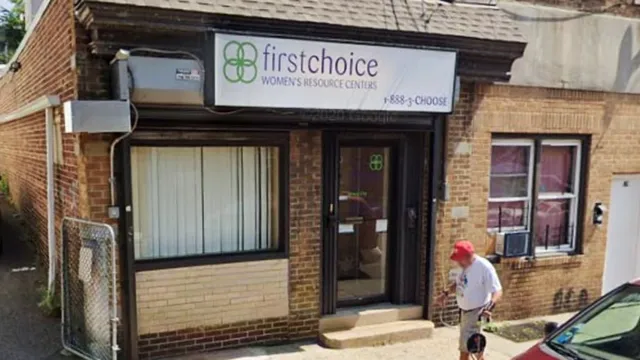
Supreme Court challenges New York's abortion coverage rule for religious groups
2025-06-16 19:22- The Supreme Court has commanded a reevaluation of New York's abortion coverage law as it pertains to religious organizations.
- The matter stems from a challenge presented by the Roman Catholic Diocese of Albany, which has persisted for nearly a decade.
- This case highlights the ongoing conflict between religious freedoms and state-mandated healthcare coverage.
Express your sentiment!
Insights
In the United States, the Supreme Court has mandated that a New York court reevaluate the eligibility of certain religious organizations for exclusion from state regulations requiring health insurance plans to cover abortions. This directive follows the Supreme Court's recent unanimous decision which found that the state of Wisconsin had discriminated against a Catholic charity regarding unemployment tax obligations. The New York case bears similarities, as it allows exemptions for religious employers whose primary aim is to disseminate religious values and who mainly serve individuals of their faith. However, it does not provide such exemptions to religious organizations that serve diverse communities, regardless of belief. The Roman Catholic Diocese of Albany has been actively contesting this New York law mandating insurance coverage for abortions for nearly a decade. The legal challenge was first initiated with a cert petition in April 2021. Subsequently, in November 2021, the Supreme Court GVR'd the case due to changing circumstances related to a separate ruling involving a Catholic foster care agency from Philadelphia. In May 2024, the New York Court of Appeals asserted that the previous Fulton ruling did not impact New York's abortion coverage mandate. The Diocese brought forth a second cert petition in July 2024, which remained in limbo for almost a year. On June 5, 2025, the Court decided on Catholic Charities Bureau, a ruling that added weight to the Diocese's arguments for exemption. Following this, New York sought a remand to prolong the legal proceedings. However, on June 9, the Court scheduled the Diocese's petition for discussion, and soon after, it officially ordered the remand once again, affirming that this matter is sufficiently significant. This series of legal maneuvers reflects the ongoing tensions between religious liberties and state regulations in the U.S. The prolonged nature of this case showcases the complexities involved in balancing the rights of religious organizations with state-imposed requirements. As both parties await further judicial clarification, the outcome of this case could lead to broader implications for similar disputes in other states concerning religious exemptions from insurance regulations related to abortion services.
Contexts
The impact of Supreme Court decisions on religious organizations and insurance laws is a complex and evolving issue that intertwines legal interpretations, religious freedoms, and health care mandates. The Supreme Court has played a pivotal role in shaping the legal landscape around these organizations, particularly regarding how they address health insurance provisions for their employees. One of the most significant cases that reflects this interplay is Burwell v. Hobby Lobby Stores, Inc. (2014). In this ruling, the Court recognized that closely-held corporations could be exempt from the Affordable Care Act’s contraceptive mandate on the grounds of religious objection. This landmark decision not only informed how religious beliefs are accommodated in corporate entities but highlighted the sensitive nature of balancing rights of religious organizations against public interest demands. Following this, the Court has continued to handle numerous cases that test the limits of religious liberties in the context of health insurance laws. Another crucial aspect to consider is the implications of these decisions on the access to healthcare services, particularly for women. While religious organizations are granted certain exemptions based on their beliefs, opponents argue that such accommodations can lead to restrictions on women’s access to comprehensive reproductive health services. The tension between protecting religious freedoms and ensuring equal access to healthcare remains a pressing issue in legal and public policy debates. Courts must continually navigate these waters to ascertain how far religious organizations can go in exercising their beliefs without infringing on the rights of employees who may not share those beliefs. Additionally, the evolving legal interpretations may have far-reaching consequences beyond the immediate context of health insurance. The broad assertion of rights by religious organizations may pave the way for similar claims in other areas, including employment practices, service provision, and even broader civil rights protections. This aspect raises important questions about the limits of religious freedom and how these assertive stances affect societal norms and legal standards. The continued review of such cases by the Supreme Court underscores the need for clear guidelines regarding the intersections of religious liberty and anti-discrimination laws, particularly as societal values evolve. Finally, as more cases reach the Supreme Court, the implications for religious organizations and their insurance obligations will remain at the forefront of legal discussions. It is essential for lawmakers, advocates, and religious leaders to engage in constructive dialogue regarding these issues to foster a better understanding of the balance necessary between respecting religious beliefs and ensuring equitable access to healthcare. The outcomes of future Supreme Court decisions will likely set precedents that could either bolster or restrict the scope of religious exemptions in insurance laws, significantly impacting how religious organizations manage their responsibilities in the healthcare domain.